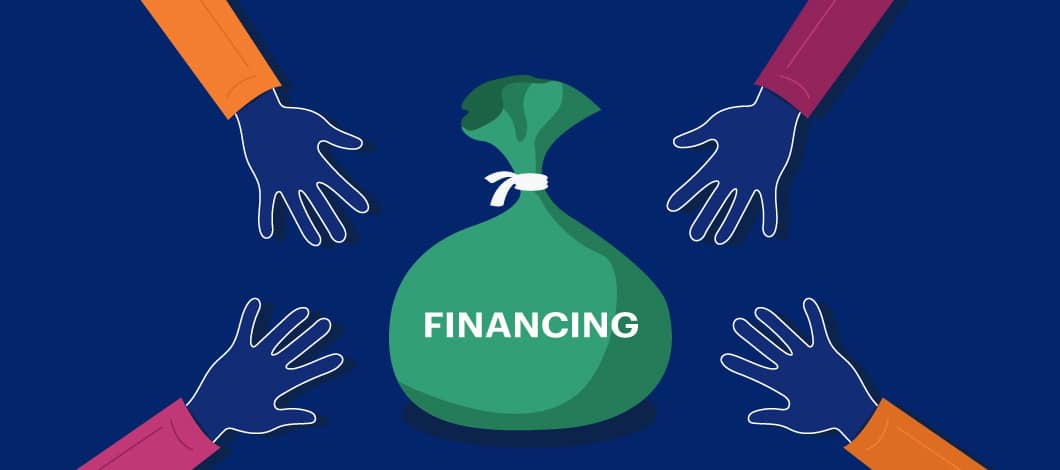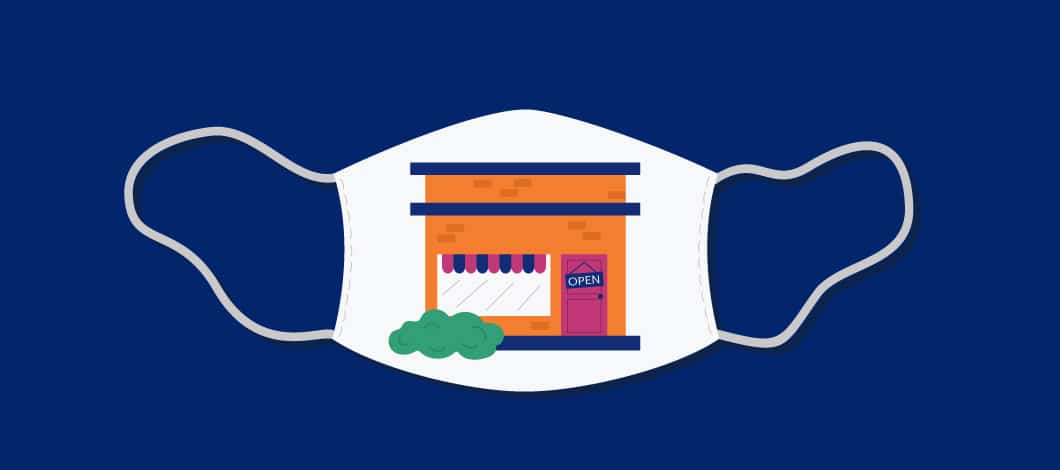The coronavirus impact on business stands to affect many industries for years. Here are 12 predictions on how COVID-19 may reshape business:
- Many small businesses will close
- Coronavirus financial impact and outlook will vary by industry
- Survivors will gain a competitive advantage
- Smart financial planning will become even more critical
- Demand for financing will increase
- More business owners will go solo
- Labor will shift to a remote work model
- Outsourcing will increase
- Employers will increase high-tech safety monitoring
- Company networks will migrate to the cloud
- Virtual collaboration apps will become the new workspace
- Digital marketing will increase in importance
Here’s more about what each of these coronavirus predictions will mean for the economy and how they will affect small businesses.
1. Many Small Businesses Will Close
Let’s start with the bad news. Coronavirus effects on small businesses have been devastating, and many companies have already closed or are facing the prospect of closing.
A survey conducted at the end of March by insurance provider MetLife and the U.S. Chamber of Commerce found 24% of small businesses had shut down temporarily, while 40% of those who hadn’t shut down anticipated having to do so within 2 weeks. Among business owners and operators surveyed, 43% believed they would have to shut down permanently in 3 to 6 months, and 46% anticipated it would take 6 months to a year before the economy returned to normal.
This sober long-term outlook was echoed in a second-quarter survey of chief executive officers released at the end of June by Business Roundtable, a nonprofit consisting of CEOs of major companies. The majority of CEOs anticipated a return to normal operations before the end of 2021, but 27% don’t expect their companies to recover until after 2021.
The outlook remained uncertain for many small businesses at the start of August. As the expiration for federal coronavirus small business relief packages passed earlier in the year loomed, the Small Business Majority, a national advocacy organization, released a survey documenting the continued plight of many entrepreneurs.
The data gathered from the survey projected that without additional funding, 44% of small businesses risked permanent closure within the next 6 months, while 6% faced closure within the month. More than a third of small business owners reported tapping into personal savings or retirement accounts to stay in business, while nearly 1 in 6 were considering filing for bankruptcy protection.

2. Coronavirus Financial Impact and Outlook Will Vary by Industry
The COVID-19 business impact has hit some industries much harder than others. Many of the industries most impacted are those which rely heavily on delivering services face-to-face or travel.
An April review of Bureau of Labor Statistics data by financial news publisher 24 Wall St. found the industries facing the most disruption include retailers, restaurants, gyms, gas stations, ride transportation services, airlines and hotels. Disruptions of domestic and overseas supply chains also have impacted industries such as manufacturing and construction. These effects in turn ripple through the small business impact on the economy as displaced workers in these industries are forced to save more and spend less, cutting into employer revenue and making less investment capital available.
Recovery projections also vary by industry. An analysis by management consulting firm McKinsey & Company found that recovery from the impact of COVID-19 will take longest for industries that provide food, hospitality, recreation and entertainment, which could take 4 to 5 years to reach previrus levels.
Other industries have much shorter recovery timelines. The health-care industry is on track towards recovery between this year and early next year, with estimated recovery time depending on how well the coronavirus is contained. Provided the virus is contained, a recovery by the end of the year also is on the horizon for industries such as manufacturing, real estate, construction, retail and information services.
Recovery could also begin early next year for sectors such as financial providers, insurance providers, utilities, transportation, warehousing and administrative and support services. However, delay of virus containment could lengthen these time frames. The quicker a vaccine is produced, the faster the economy will recover.
3. Survivors Will Gain a Competitive Advantage
While the COVID-19 pandemic is bad news for everyone, some good news for companies that survive is that there may be a silver lining. There’s a correlation between preparedness for disruptions such as the coronavirus and business continuity.
If you’re able to survive the pandemic, chances are you were doing something right before the crisis which enabled you to endure it and will position you for continued success after it subsides. Moreover, you will emerge with many of your competitors out of business, opening up opportunities to capture market shares.
Here smaller businesses can look to the example of larger companies for consolation. For instance, ecommerce sales nearly doubled in May, according to MasterCard, placing companies that rely on internet purchases in a dominant position over competitors limited to brick-and-mortar sales. Investors recognized this, sending up the value of stocks for digital giants such as Microsoft, Apple and Amazon.com. After the pandemic sent the market crashing in March, these 3 companies collectively gained three-quarters of a trillion dollars over the next month, more than the combined gains of the bottom half of all stocks in the S&P 500, according to stock market data.
A Harvard study of publicly held companies found that investors favored companies with a resilient response to the coronavirus, which saw a 3% less negative effect on stocks than other firms. In a similar way, small companies that are able to bounce back from the pandemic because of superior business strategies stand a strong chance of coming out on top of competitors that failed to adapt to the crisis.
4. Smart Financial Planning Will Become Even More Critical
One reason the coronavirus hit some small business so hard was lack of financial planning. The average small business with over $10,000 in monthly expenses only had 2 weeks of cash on hand when COVID-19 hit, according to a survey of small businesses by researchers from multiple universities published in the Proceedings of the National Academy of Sciences. Three-quarters of small businesses only had enough cash to last 2 months or less. Companies with more cash had a more optimistic outlook on their ability to survive the pandemic.
To position yourself for surviving the pandemic, prioritize financial planning. Review your expenses and look for places to trim your budget. Be on the lookout for cost-efficient ways to increase your revenue as well.
5. Demand for Financing Will Grow
The coronavirus outbreak has increased companies’ need for financing. By April, 70% of small business owners had tried to apply for Paycheck Protection Program loans, according to data released by the National Federation for Independent Business (NFIB). Following the expiration of the original PPP loan program on Aug. 8, a follow-up NFIB survey found that 44% of eligible companies would apply or reapply for coronavirus small business assistance if the PPP program were extended, while 31% would consider doing so.
Heightened demand for financing will likely continue until the economic impact of the pandemic subsides. If you need financing to weather the crisis, consider submitting a business loan request or applying for another form of financing such as a business credit card.

6. More Business Owners Will Go Solo
Even before COVID-19, a growing number of U.S. workers had joined the independent workforce in such capacities as contractors, freelancers or temporary workers. In 2019, 41 million U.S. workers fell into the independent category, according to an annual report by management services provider MBO Partners.
The coronavirus will accelerate this trend for several reasons. Some employers forced to cut costs are laying off workers, with 17% of small businesses relying on smaller staff than last year, according to a July survey by MetLife and the U.S. Chamber of Commerce.
Meanwhile, workers who have been laid off have sought independent employment, leading to a 25% increase in demand for gig economy apps, according to staffing company GigSmart. Working solo from home also offers a safer working environment for workers concerned about COVID-19.
7. Labor Will Shift to a Remote Work Model
For both economic and safety reasons, the pandemic will promote an already-existing trend towards a remote work increase among small business employees. Between 2012 and 2016, the number of Americans working remotely at least part of the time increased from 39% to 43%, according to Gallup data.
The coronavirus outbreak triggered a surge in remote work, with the number of workers reporting working from home doubling from 31% in March to 62% in April. Of these, 3 in 5 said they would prefer to continue remote work options even after the pandemic subsides.
8. Outsourcing Will Increase
Efforts to cut costs and reduce on-site safety risks will also promote a trend towards outsourcing. In 2019, 37% of small businesses outsourced some of their business processes, and 52% planned to do so, according to marketing data provider Clutch.
While COVID-19 initially disrupted conventional outsourcing services as on-site workers adjusted to home-based work, the long-term impact of the pandemic will be to increase outsourcing. For instance, information technology outsourcing is expected to increase at a compound annual growth rate of nearly 5% from 2020 to 2024 because of the need to optimize business processes in the wake of the pandemic, research company Technavio projects.
9. Employers Will Increase High-tech Safety Monitoring
The coronavirus has raised employer safety concerns, which is promoting increased use of safety monitoring technology. Even before the pandemic, more than 50% of corporations were using nontraditional methods such as virtual time tracking, social media monitoring and biometric data collection to track workers, a survey by research provider Gartner found.
Since the COVID-19 outbreak, 16% of companies have been using these types of monitoring methods more frequently, Gartner reports. State and local regulations that require workers to wear masks encourage tighter employee monitoring.
10. Company Networks Will Migrate to the Cloud
The shift towards a remote workforce during the pandemic is pushing more small businesses to migrate their company networks and software towards cloud services. In 2019, 67% of small and midsize companies had at least begun to mature in their adoption of cloud technology, and another 14% were considering it, according to an annual report by cloud provider Flexera.
In the wake of the coronavirus, 84% of small businesses now consider the cloud as essential for their operations, according to a survey by the Small Business & Entrepreneurship Council, an advocacy organization. Automation specialist Codefresh reports that 58% of companies are moving some infrastructure to the cloud in response to COVID-19, including 17% who are moving their entire software infrastructure to the cloud.
11. Virtual Collaboration Apps Will Become the New Workspace
As remote work and cloud usage rise, the workplace will increasingly shift from the physical workspace towards collaboration apps in virtual space. The trend towards virtual collaboration was already gathering momentum before COVID-19, with about 6 in 10 companies using either Slack, Skype for Business or Microsoft Teams and 91% using at least 2 messaging apps, according to a survey by messaging provider Mio.
The pandemic outbreak sparked a surge in collaboration app usage. In one week in March, Microsoft added as many Teams users as Slack has in total. Meanwhile, Slack saw a 40% increase in users in February and the first 2 weeks of March over each of its 2 previous fiscal quarters. Zoom also reported a 78% increase in revenue in early March.
12. Digital Marketing Will Increase in Importance
Consumers also are moving online in response to the coronavirus, propelling digital marketing trends that were already gaining speed before the outbreak. At the end of 2019, research provider Zenith was projecting that U.S. Internet ad spending would increase 12.4%, compared with 6.5% for overall ad spending, according to data cited in an annual roundup by marketing news service AdAge.
The coronavirus outbreak initially cut into all forms of marketing expenditures, causing 70% of buyers to pause planned purchases, according to the Interactive Advertising Bureau, an advertising business organization. However, the long-term effect of COVID-19 will be to encourage companies to shift their marketing efforts towards digital customers.
Global mobile ad spending soared 71% in the second quarter of the year compared to last year, according to a quarterly index report from advertising software provider PubMatic. Mobile video, hit hard in the first quarter, reached 116% of pre-pandemic levels in the second quarter.
These trends illustrate the growing importance of digital marketing in a socially distant marketplace.
Prepare for the New Normal
While no predictions are certain, having an informed sense of what to expect in the wake of the coronavirus gives you an opportunity to do your best to prepare for coming changes. Review your business model in light of the projections outlined here, and identify where you might make adjustments to improve your outlook. If your projections indicate that you’ll need financing, consider looking into resources such as small business loans, lines of credit or merchant cash advances.











